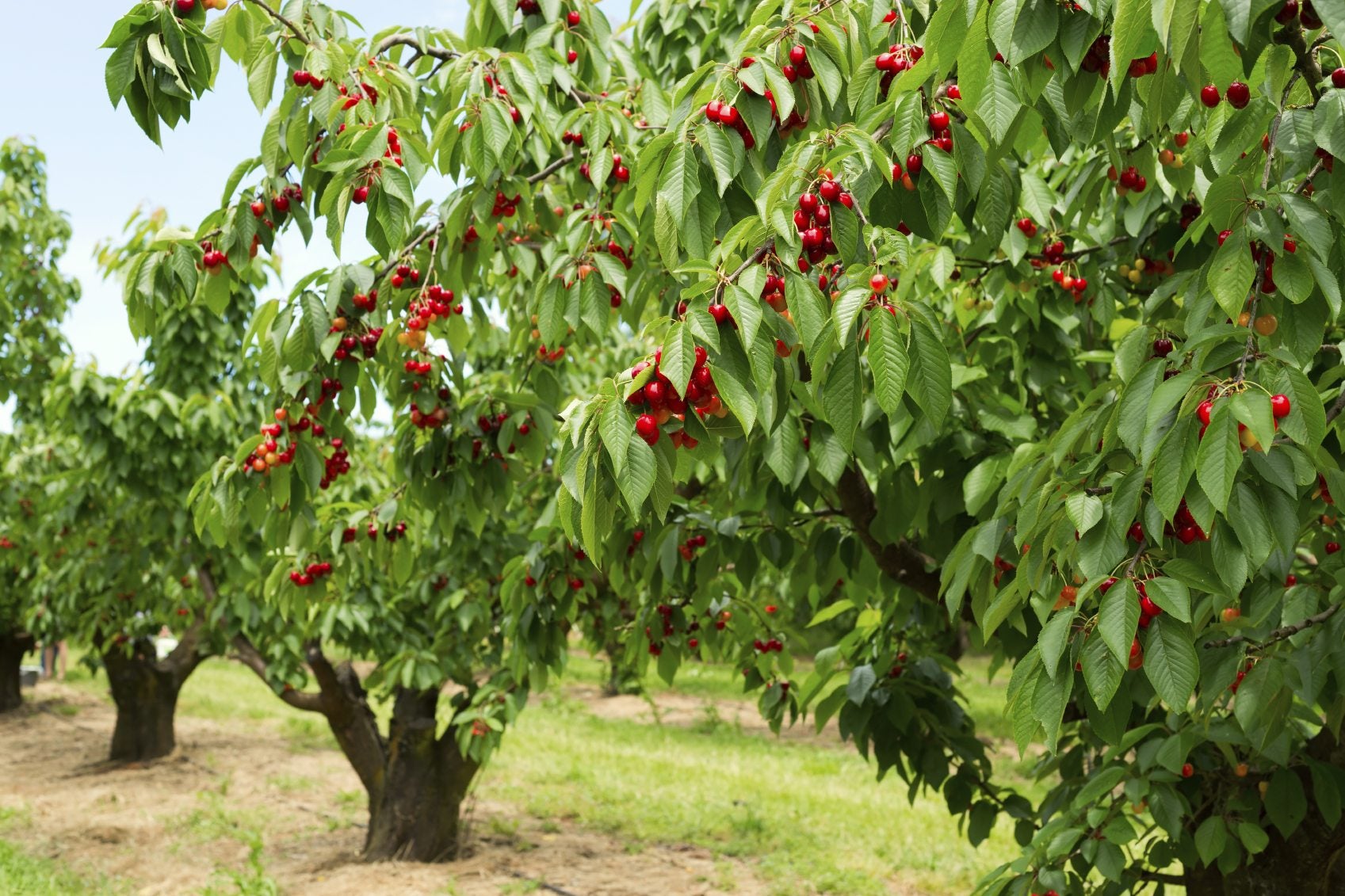Cherry Tree Varieties: Types Of Cherry Trees For The Landscape

At this writing, spring has sprung and that means cherry season. I love Bing cherries and no doubt this variety of cherry is one most of us are familiar with. However, there are a number of cherry tree types. Among the varieties of cherry trees, is there a cherry tree suited for your landscape? Read on to learn more.
Types of Cherry Trees
The two basic cherry tree types are those that yield sweet cherries that can be eaten immediately picked off the tree and sour cherry or baking cherries. Both cherry tree types ripen early and are ready for harvest in the late spring. Most sweet cherries need a pollinizer while sour cherries are predominantly self-fruitful.
Common Cherry Tree Types
- Chelan has an upright, vigorous habit with fruit that matures two weeks ahead of Bing cherries and are resistant to cracking.
- Coral has large, firm fruit with excellent flavor and low susceptibility to cracking.
- Critalin bears early and is an excellent pollinizer and bears dark, red, juicy fruit.
- Rainier is a mid-season cherry that is yellow with a red blush.
- Early Robin matures a week earlier than Rainier. It is mild in flavor with a semi-free stone and a heart shape.
- Bing cherries are large, dark and one of the most common commercially sold cherries.
- Black Tartarian is a terrific bearer of large purple-black, sweet, juicy fruit.
- Tulare is similar to Bing and stores well for a long time.
- Glenare has very large, sweet, clingstone type fruit of dark red.
- Utah Gold has larger, firmer fruit than Bing and is partially freestone.
- Van has reddish black, sweet cherries and is an excellent pollinator.
- Attika is a late-blooming cherry tree with large, dark fruit.
- Regina has fruit that is mild and sweet and tolerant to cracking.
- Emperor Francis is a white- or yellow-fleshed cherry that is sweet and often used as maraschino cherries.
- Ulster is another sweet cherry, black in color, firm and moderately resistant to rain cracking.
- English Morello is a sour type of cherry prized by pie makers and for commercial juices.
- Montmorency is the most popular variety of sour cherry, making up 96% of the total production for commercial pie fillings and toppings.
Self-Fertile Varieties of Cherry Trees
Amongst the self-fertile cherry tree varieties you will find:
- Vandalay, a large, wine colored fruit.
- Stella also has large fruit in a blood red hue. Stella is very productive but sensitive to cold.
- Tehranivee is a mid-season, self-fertile cherry.
- Sonata is sometimes called Sumleta TM and has large, black fruit.
- Whitegold is an early mid-season, sweet cherry.
- Symphony matures late in the season with large, vibrantly red cherries that are resistant to rain crack.
- Blackgold is a late mid-season, sweet cherry with a tolerance of spring frost.
- Sunburst is very productive with large, firm fruit.
- Lapins is somewhat crack resistant.
- Skeena is a dark mahogany cherry.
- Sweetheart matures late with large fruit. Sweetheart types of cherry trees are prolific fruiters with dark-red, medium to large cherries but they need pruning to keep them from getting out of hand.
- Benton is another self-fertile cherry tree for the landscape that ripens mid-season and has been reputed to surpass Bing cherries.
- Santina is an early black cherry with a sweeter flavor than other black cherries.
Gardening tips, videos, info and more delivered right to your inbox!
Sign up for the Gardening Know How newsletter today and receive a free copy of our e-book "How to Grow Delicious Tomatoes".

Amy Grant has been gardening for 30 years and writing for 15. A professional chef and caterer, Amy's area of expertise is culinary gardening.
-
 Looking For Plants To Give You The Soft And Fuzzies? Try These 5 Fuzzy Leaf Plant Options
Looking For Plants To Give You The Soft And Fuzzies? Try These 5 Fuzzy Leaf Plant OptionsLovers of texture, drama, silver foliage and tactile plants will adore these special sensory garden additions. These fuzzy leaf plant options will leave you all aglow
By Susan Albert
-
 Get Ready For A Summer Of Hummers! Grow These Full Sun Hummingbird Plants and Flowers
Get Ready For A Summer Of Hummers! Grow These Full Sun Hummingbird Plants and FlowersIf you’re lucky enough to enjoy a sunny backyard, make sure you are maxing out on your pollinator opportunities and grow these full sun hummingbird plants and flowers
By Tonya Barnett